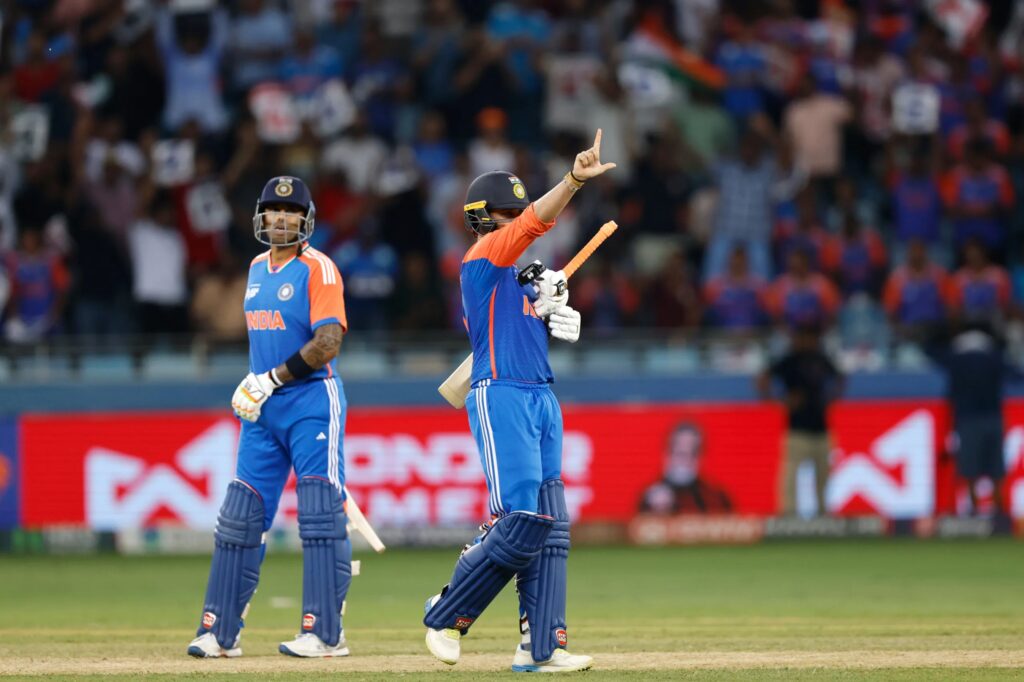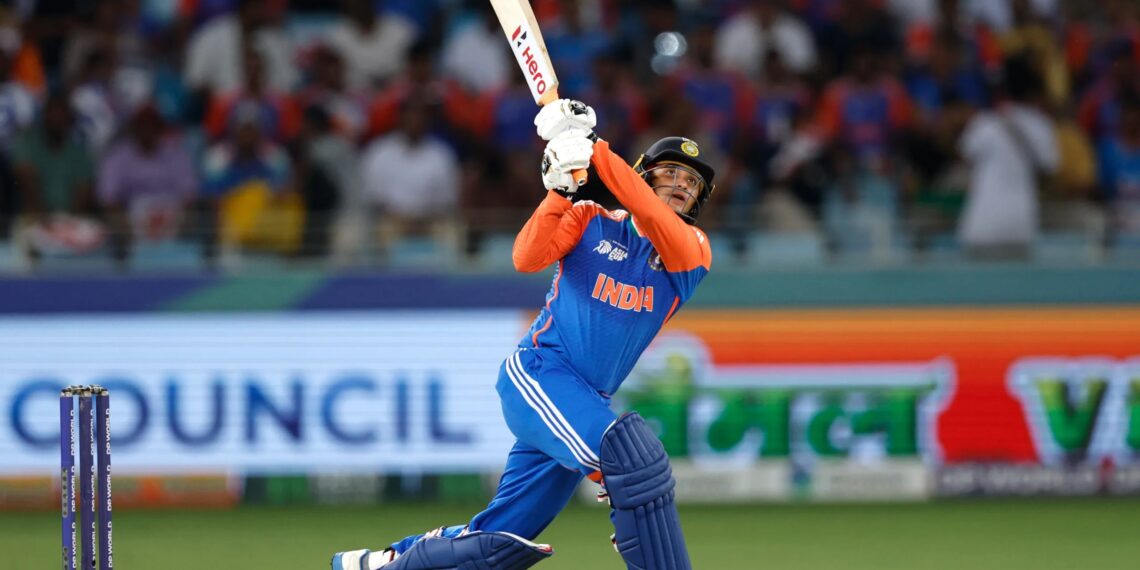In the rain-interrupted fifth T20I at Brisbane’s iconic Gabba, Abhishek Sharma etched his name into cricket’s history books with golden ink. The 24-year-old left-handed opener from Punjab accomplished what seemed unthinkable just months ago, becoming the fastest batter from full-member nations to reach 1,000 T20I runs based on balls faced. His achievement in a mere 528 deliveries obliterated the previous world record, redefining what’s possible in modern cricket’s shortest format.
The milestone arrived during India’s series-clinching clash against Australia on November 8, 2025, a fitting stage for a record that signals the emergence of a generational talent. What makes Abhishek Sharma’s feat extraordinary isn’t merely the speed, but the explosive consistency he’s maintained since his international debut in July 2024. In just 16 months, he’s transformed from promising prospect to record-breaking phenomenon, leaving established stars trailing in his wake.
Table of Contents
Breaking Down Abhishek Sharma’s Record-Shattering Achievement
The numbers tell a story of sustained aggression married to calculated risk-taking. Abhishek Sharma required just 528 balls to reach the four-figure milestone, demolishing his captain Suryakumar Yadav’s previous benchmark of 573 deliveries by a staggering 45 balls. To put this in perspective, England’s Phil Salt needed 599 balls, while Australian all-rounder Glenn Maxwell took 604 deliveries for the same achievement.
Fastest to 1000 T20I Runs (By Balls Faced – Full Members)
| Rank | Player | Country | Balls Faced | Difference from Abhishek |
|---|---|---|---|---|
| 1 | Abhishek Sharma | India | 528 | – |
| 2 | Suryakumar Yadav | India | 573 | +45 |
| 3 | Phil Salt | England | 599 | +71 |
| 4 | Glenn Maxwell | Australia | 604 | +76 |
| 5 | Finn Allen | New Zealand | 609 | +81 |
| 5 | Andre Russell | West Indies | 609 | +81 |
The gap between Abhishek Sharma and second-placed Suryakumar Yadav represents approximately eight full innings of aggressive batting, highlighting the sheer velocity of his run accumulation. His strike rate of 189.51 across 29 matches demonstrates that this wasn’t achieved through singles and doubles, but through boundary-laden assault on bowling attacks worldwide.

Remarkably, Abhishek Sharma also became the second-fastest Indian to 1,000 T20I runs by innings, achieving the milestone in just his 28th innings. Only the legendary Virat Kohli stands ahead, having reached the landmark in 27 innings. This dual achievement, fastest by balls faced globally and second-fastest by innings nationally, underscores the complete dominance Abhishek Sharma has exhibited since donning the India jersey.
The Journey to Greatness: From Debut to Dominance
Abhishek Sharma’s international career began against Zimbabwe in July 2024, but few could have predicted the meteoric rise that followed. Making his mark as an opening batter, he immediately showcased the aggressive intent that would become his signature, treating powerplay restrictions as mere suggestions rather than constraints.
His breakthrough innings came against England when he smashed an unbeaten 135, India’s second-highest individual score in T20Is. That knock included 13 sixes and seven boundaries, demonstrating the clean ball-striking ability that has become his trademark. The innings wasn’t just about brute force; it showcased intelligent shot selection, adapting to different bowling types while maintaining relentless scoring pressure.
The statistics from his brief international career paint a picture of sustained excellence. Across 29 T20I appearances, Abhishek Sharma has accumulated 1,012 runs at an average of 37.48 with a breathtaking strike rate of 189.51. His tally includes two centuries and six half-centuries, meaning he’s crossed fifty in more than a quarter of his innings while maintaining an approach that prioritizes team momentum over personal milestones.
Abhishek Sharma’s T20I Career Breakdown
| Statistic | Value | Significance |
|---|---|---|
| Matches Played | 29 | Record achieved in under 16 months |
| Innings Batted | 28 | One rain-affected no-result |
| Total Runs | 1,012 | Milestone achieved |
| Batting Average | 37.48 | Consistency despite aggressive approach |
| Strike Rate | 189.51 | Nearly two runs per ball |
| Highest Score | 135* | vs England (2024) |
| Centuries | 2 | Elite conversion rate |
| Half-Centuries | 6 | Regular substantial contributions |
What distinguishes Abhishek Sharma from other aggressive openers is his ability to combine devastation with durability. While many power-hitters flame out quickly or struggle for consistency, he’s demonstrated the capacity to build innings when required while never abandoning his natural attacking instincts. This balance explains why he currently occupies the number one position in ICC’s T20I batting rankings.
The Australia Series: Cementing Legacy Under Pressure
Abhishek Sharma’s record-breaking moment arrived during India’s tour of Australia, a challenging environment where many young players falter. The five-match T20I series provided the perfect laboratory for testing his credentials against quality pace bowling on bouncy pitches, and he passed with distinction.
His best performance came in the second T20I at Melbourne, where he blitzed 68 runs from just 37 deliveries. That innings set the template for India’s series dominance, providing explosive starts that allowed the middle order to consolidate or accelerate depending on match situations. Across four completed matches in the series, Abhishek Sharma accumulated 140 runs, emerging as India’s leading run-scorer despite the challenging conditions.
The Gabba match where he achieved the milestone was particularly dramatic. Dropped twice by Australian fielders, once before reaching 1,000 runs and immediately after, both chances coming within his first 11 balls, Abhishek Sharma demonstrated the mental fortitude champions require. Rather than playing cautiously after these reprieves, he continued his aggressive approach, reaching 23 runs from 13 balls before rain and lightning halted proceedings with India cruising at 52 for no loss.

These dropped catches became footnotes to a larger narrative: Australian fielders couldn’t hold catches off Abhishek Sharma because he was hitting the ball too cleanly and too hard. The sheer power generation in his shots, combined with innovative stroke play, has made him a nightmare for fielding sides, particularly during powerplay overs when field restrictions amplify his boundary-hitting prowess.
Technical Mastery Behind the Mayhem
While Abhishek Sharma’s statistics scream aggression, deeper analysis reveals sophisticated technique underpinning the pyrotechnics. His left-handed stance provides natural advantages against conventional bowling plans, allowing him to target gaps that right-handers cannot access as easily. His backlift is compact yet generates tremendous bat speed through the hitting zone, creating the leverage needed for sixes without requiring baseball-style swings.
Against pace bowling, Abhishek Sharma employs a trigger movement that positions him optimally for both front-foot drives and back-foot cuts. He’s particularly devastating against short-pitched bowling, using his height and quick hands to dispatch anything above rib-height over the leg-side boundary. His pull shot and hook shot have become signatures, executed with a combination of power and placement that frequently beats even perfectly-positioned deep fielders.
Spin bowling presents different challenges, yet Abhishek Sharma has developed effective countermeasures. His footwork against slower bowlers is proactive rather than reactive, constantly advancing down the pitch to negate turn and bounce. When remaining in the crease, he employs the sweep and reverse-sweep liberally, understanding that disrupting length is crucial against quality spinners. This adaptability explains why he’s succeeded across diverse conditions, from subcontinental turners to Australian pace-friendly tracks.
Comparative Context: Standing Among Giants
Placing Abhishek Sharma’s achievement in historical context illuminates its magnitude. Among Indian T20I batters, only Virat Kohli has reached 1,000 runs in fewer innings (27), and Kohli achieved this over a longer timeline with less aggressive strike rate. KL Rahul needed 29 innings, Suryakumar Yadav required 31, and Rohit Sharma took 40 innings for the same milestone.
Fastest Indians to 1000 T20I Runs (By Innings)
| Rank | Player | Innings | Balls Faced | Average | Strike Rate |
|---|---|---|---|---|---|
| 1 | Virat Kohli | 27 | – | 52.65 | 137.96 |
| 2 | Abhishek Sharma | 28 | 528 | 37.48 | 189.51 |
| 3 | KL Rahul | 29 | – | 41.67 | 145.63 |
| 4 | Suryakumar Yadav | 31 | 573 | 45.65 | 170.21 |
| 5 | Rohit Sharma | 40 | – | 31.71 | 136.48 |
The comparison reveals Abhishek Sharma’s unique profile. While Kohli achieved the milestone in one fewer innings, his strike rate was significantly lower, reflecting a different era of T20 cricket and contrasting playing philosophies. Abhishek Sharma’s combination of rapid accumulation and explosive strike rate represents the evolution of batting in the format, where boundary-hitting ability is prioritized over accumulation.
Globally, Abhishek Sharma’s record shatters previous assumptions about how quickly 1,000 T20I runs could be accumulated. Tim David of Australia, who previously held the unofficial record before Suryakumar Yadav claimed it, needed 569 balls. The 41-ball difference between Abhishek Sharma and David’s mark represents approximately seven overs of batting, or roughly one-third of a typical T20 innings, further emphasizing the exceptional nature of this achievement.
Impact Beyond Individual Glory
Abhishek Sharma’s rapid rise has transformed India’s T20I strategy fundamentally. His presence at the top of the order provides captain Suryakumar Yadav with tactical flexibility unavailable to previous leadership regimes. The aggressive intent from ball one creates immediate scoreboard pressure, forcing opposing captains into defensive field placements earlier than they’d prefer.
His partnership with Shubman Gill has become one of modern cricket’s most productive opening combinations. The left-right combination complicates bowling plans, while their contrasting styles, Abhishek’s explosive power versus Gill’s classical elegance, ensures that one batter is always well-suited to prevailing conditions. In the Brisbane match, they showcased this synergy perfectly, racing to 52 without loss in just 4.5 overs before weather intervention.
The psychological impact on opposition teams cannot be understated. Bowling the first over to Abhishek Sharma has become one of cricket’s most intimidating assignments. Pacers know that even good deliveries can disappear for boundaries if marginally misjudged, while spinners recognize that flight and loop carry enormous risk against a batter comfortable dancing down the pitch or sweeping from off-stump to leg-side boundary.
The IPL Foundation: Sunrisers Hyderabad’s Finishing School
Abhishek Sharma’s international success was built on a foundation laid in the Indian Premier League with Sunrisers Hyderabad. After joining the franchise in 2019 following a brief stint with Delhi Capitals, he gradually established himself as a reliable top-order batter. The 2024 IPL season proved transformative, as his partnership with Travis Head produced some of the most explosive powerplay batting the tournament has witnessed.
During IPL 2024, Abhishek Sharma was instrumental in Sunrisers Hyderabad reaching their first final since 2018. His fearless approach perfectly complemented Head’s aggression, with both batters unafraid to target bowlers from the first delivery. This IPL success directly translated to international cricket, proving that his methods worked against the world’s best bowlers in high-pressure situations.
The franchise retained him for ₹14 crore ahead of IPL 2025, a massive investment that reflected their confidence in his abilities. That trust was rewarded when he smashed 141 runs off just 45 balls in one match, one of IPL history’s fastest and most impactful innings. His ability to score quickly while maintaining consistency makes him invaluable in franchise cricket’s commercial landscape, where explosive entertainment drives viewership and revenue.
Asia Cup Domination: A Continental Masterclass
While the world record grabbed headlines, Abhishek Sharma’s Asia Cup 2025 performance deserves equal recognition as perhaps the finest individual tournament display in T20I cricket’s recent history. He accumulated 314 runs in seven innings, breaking the record for most runs scored in a single T20I edition of the tournament. This wasn’t merely about quantity; his strike rate remained stratospheric throughout, proving that sustained aggression across an entire tournament is possible.
His Asia Cup heroics earned him the Player of the Tournament award, recognition from peers and experts that his contributions were decisive in India’s triumph. The campaign also propelled him to the highest-ever rating points in T20I history with 931 ranking points, a statistical achievement that reflects both his current form and consistent excellence across multiple series.
The Asia Cup success was particularly significant because it came against quality Asian bowling attacks on subcontinental conditions that traditionally favor bowlers. Abhishek Sharma’s ability to dominate spin-heavy attacks demonstrated the completeness of his game, dispelling any notion that he’s merely a pace-basher who struggles when conditions don’t favor aggressive strokeplay.
The Record That Nearly Didn’t Happen
The dramatic circumstances surrounding the record achievement add human drama to statistical excellence. Australian fielders Glenn Maxwell and Ben Dwarshuis both dropped straightforward catches off Abhishek Sharma’s batting, moments that could have derailed the record attempt. The first drop came before he reached the milestone, the second immediately after, both within his first 11 balls at the crease.
These dropped chances highlight an often-overlooked aspect of Abhishek Sharma’s success: courage under fire. Many batters, particularly young ones chasing significant milestones, might have adopted a more cautious approach after early reprieves. Not Abhishek Sharma. He continued attacking, recognizing that his team’s success required aggressive intent regardless of personal landmarks approaching.
The match itself never reached a conclusion, with lightning and rain forcing abandonment after just 4.5 overs. This anticlimactic ending couldn’t diminish the achievement’s significance. Abhishek Sharma had reached his milestone, India had secured the series victory, and a new chapter in T20I batting excellence had been written.
Future Implications: What This Record Means
At just 24 years old, Abhishek Sharma has decades of potential international cricket ahead. If he maintains even half his current scoring rate, he could accumulate statistics that dwarf current records. The projection is tantalizing: another 16 months at his current pace would see him approach 2,000 T20I runs, territory occupied by only the format’s all-time greats.
The upcoming T20 World Cup 2026 looms as the ultimate stage for validating his credentials. Former India opener Sadagoppan Ramesh has already identified Abhishek Sharma as India’s biggest X-factor for the tournament, suggesting that his explosive batting could prove decisive in knockout matches where quick starts often determine outcomes. His ability to demoralize opposition attacks within the powerplay could prove the difference between tournament success and failure.
Beyond individual accolades, Abhishek Sharma represents a philosophical shift in how India approaches T20 cricket. The team has moved from conservative powerplay batting toward all-out aggression, a strategic evolution enabled by players willing to embrace risk. His success validates this approach, demonstrating that aggressive intent from ball one creates advantages that compensate for the occasional early dismissal.
The Broader Context: T20 Cricket’s Evolution
Abhishek Sharma’s record encapsulates modern T20 cricket’s evolution. When the format debuted internationally in 2005, scores of 120 were considered competitive. Today, teams routinely target 200-plus totals, and Abhishek Sharma exemplifies the batting approach driving this inflation. His career strike rate of 189.51 would have seemed impossible a decade ago; now it’s becoming the standard for elite players.
The technical evolution in bat design, combined with improved fitness allowing players to generate more bat speed, has transformed what’s possible. Abhishek Sharma leverages these advantages maximally, understanding that modern T20 cricket rewards boundary-hitting ability more than accumulation. His record suggests that future players might reach 1,000 runs even faster, though breaking his mark will require extraordinary talent combined with sustained form.

This achievement also reflects cricket’s democratization. Abhishek Sharma comes from Amritsar, not a traditional cricket powerhouse, yet reached international cricket’s pinnacle through talent and determination. His success story inspires countless young cricketers from smaller cities, demonstrating that excellence can emerge from anywhere when opportunity meets preparation.
Read More: IPL 2026 Countdown Begins: Franchises Set to Unveil Retentions on November 15
FAQs
How many balls did Abhishek Sharma need to reach 1000 T20I runs?
Abhishek Sharma reached 1,000 T20I runs in just 528 balls, breaking Suryakumar Yadav’s previous record of 573 balls by 45 deliveries. He achieved this feat during the fifth T20I against Australia at the Gabba in Brisbane on November 8, 2025.
Is Abhishek Sharma the fastest Indian to 1000 T20I runs?
Yes, by balls faced (528 balls). However, Virat Kohli remains fastest by innings, reaching the milestone in 27 innings compared to Abhishek’s 28. Abhishek achieved this with a much higher strike rate of 189.51.
What is Abhishek Sharma’s T20I strike rate and average?
In 29 T20I matches, Abhishek Sharma has scored 1,012 runs at an average of 37.48 with a strike rate of 189.51. He has two centuries and six half-centuries, with a highest score of 135 not out against England.
When did Abhishek Sharma make his T20I debut?
Abhishek Sharma made his T20I debut in July 2024 against Zimbabwe. In just 16 months, he transformed into a record-breaking opener and became the number one ranked T20I batter in ICC rankings.
Which records does Abhishek Sharma currently hold in T20I cricket?
Key records include: fastest to 1,000 runs by balls faced (528 balls), most runs in a single Asia Cup edition (314 runs), highest-ever T20I rating points (931), and most sixes by an Indian in a single T20I innings.








